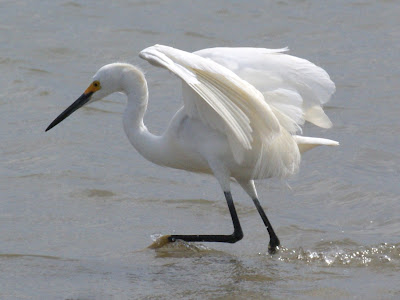Our first stop on Saturday was at Rollover Pass on the Bolivar peninsula.
As usual, there were thousands of birds standing on or around sandbars, while a few other birds were scouring the edge of the beach.
March is always a great month for American Avocets on Bolivar and several hundred were lined up in the water; many were in breeding plumage.
The closest sandbars had a wonderful variety of birds: Brown Pelicans, Laughing and Ring-billed Gulls, hundreds of Black Skimmers, Marbled Godwits, Willets, Short-billed Dowitchers and a solitary American Oystercatcher. They also had several tern species: Royal, Common, Black, Sandwich, Forster’s and Least.
From time to time a bunch of Skimmers would take to the air and zoom over the water. Unfortunately, none of them used the fishing technique that gives them their name.
Royal Terns were lined up on the sandbanks.
There were only a few Forster’s Terns.
By contrast, there were scores of Least Terns, many of which were busy looking for lunch.
A solitary Willet watched as I walked by.
Most of the smaller shorebirds rushing around on or near the beach were Sanderlings.
However, there were four plover species also: Black-bellied, Semipalmated, Wilson’s and Piping (an endangered species).
In the distance a white-morph Reddish Egret danced its way through the shallows, trying to stir up fish. A few minutes later, and much closer, a Snowy Egret proceeded to imitate the Reddish.
After 30 minutes we tore ourselves away from Rollover and headed to High Island. The continuing southerly winds were likely to mean few migrants would be landing there but we planned to spend some time watching the antics of the nesting wading birds at the Smith Oaks rookery.
.





















No comments:
Post a Comment